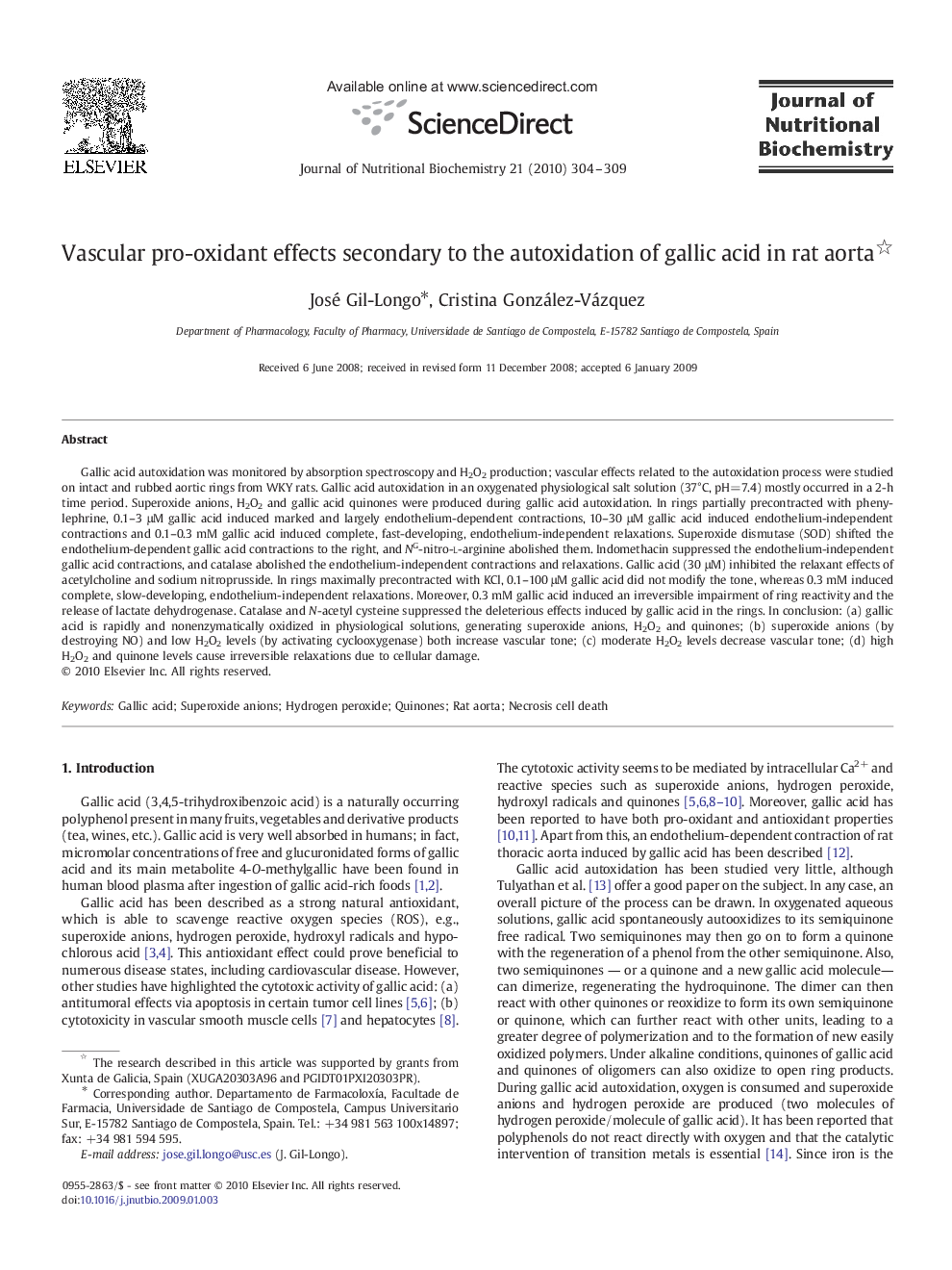| Article ID | Journal | Published Year | Pages | File Type |
|---|---|---|---|---|
| 1990882 | The Journal of Nutritional Biochemistry | 2010 | 6 Pages |
Gallic acid autoxidation was monitored by absorption spectroscopy and H2O2 production; vascular effects related to the autoxidation process were studied on intact and rubbed aortic rings from WKY rats. Gallic acid autoxidation in an oxygenated physiological salt solution (37°C, pH=7.4) mostly occurred in a 2-h time period. Superoxide anions, H2O2 and gallic acid quinones were produced during gallic acid autoxidation. In rings partially precontracted with phenylephrine, 0.1–3 μM gallic acid induced marked and largely endothelium-dependent contractions, 10–30 μM gallic acid induced endothelium-independent contractions and 0.1–0.3 mM gallic acid induced complete, fast-developing, endothelium-independent relaxations. Superoxide dismutase (SOD) shifted the endothelium-dependent gallic acid contractions to the right, and NG-nitro-l-arginine abolished them. Indomethacin suppressed the endothelium-independent gallic acid contractions, and catalase abolished the endothelium-independent contractions and relaxations. Gallic acid (30 μM) inhibited the relaxant effects of acetylcholine and sodium nitroprusside. In rings maximally precontracted with KCl, 0.1–100 μM gallic acid did not modify the tone, whereas 0.3 mM induced complete, slow-developing, endothelium-independent relaxations. Moreover, 0.3 mM gallic acid induced an irreversible impairment of ring reactivity and the release of lactate dehydrogenase. Catalase and N-acetyl cysteine suppressed the deleterious effects induced by gallic acid in the rings. In conclusion: (a) gallic acid is rapidly and nonenzymatically oxidized in physiological solutions, generating superoxide anions, H2O2 and quinones; (b) superoxide anions (by destroying NO) and low H2O2 levels (by activating cyclooxygenase) both increase vascular tone; (c) moderate H2O2 levels decrease vascular tone; (d) high H2O2 and quinone levels cause irreversible relaxations due to cellular damage.
